Packing list for ski tours
Take a look at the recommended packing list with packing tips from our mountain guides! The packing list for ski tours includes essential equipment for safety, comfort and emergencies.
Download compact packing list as PDF:
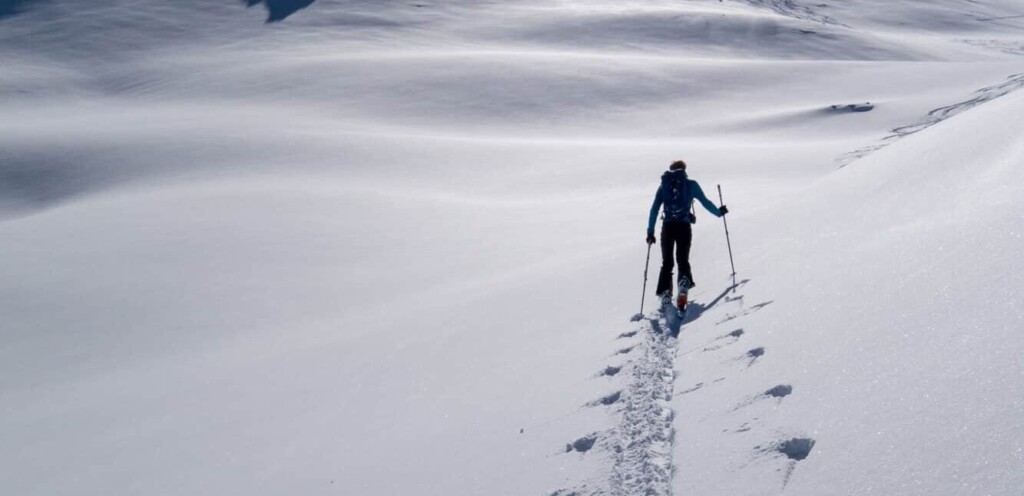
We have put together our recommended packing list for ski tours. The first section is for tours with a mountain guide and the second section is what you should take with you if you want to go on your own adventure.
- We also offer great deals on ski tour hire equipment:
- Ski Rental Zueri
- Complete equipment, i.e. skis, boots, safety set, rucksack and poles
Flat rate for CHF 100. - You can add this to your shopping basket and collect it from Ski Rental.
- Complete equipment, i.e. skis, boots, safety set, rucksack and poles
- Sport Trend Shop Hinwil
- Touring ski package (touring skis incl. skins and crampons, touring boots, touring poles)
CHF 60 for one-day courses and CHF 80 for two-day courses - Package Safety (avalanche transceiver, avalanche shovel and probe):
CHF 20 for one-day courses and CHF 25 for two-day courses - You can collect this from the Sport Trend Shop with our booking confirmation and pay there. Please contact STS in advance to reserve the equipment. Collection on Friday and return by Tuesday.
- Touring ski package (touring skis incl. skins and crampons, touring boots, touring poles)
- Ski Rental Zueri
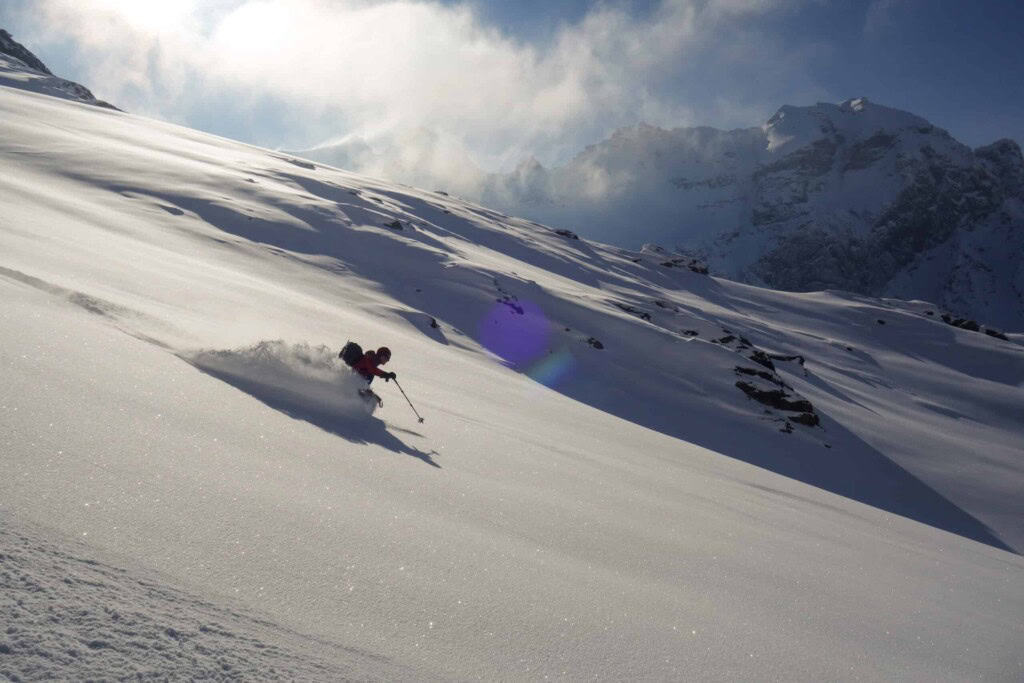
Basic equipment
- Clothing suitable for ski touring includes the following layers:
- By the legs
- Ski touring trousers: either softshell trousers with more breathability or Gore-Tex trousers for optimum protection in really "huddle" weather.
- Long pants (merino) if necessary
- For the top
- Wind and rain protection (Gore-Tex jacket or similar)
- Warmth jacket, i.e. a down jacket or one with synthetic filling. The synthetic filling stays warm even when it gets wet and is produced more responsibly.
- Jumper
- T-shirt and thermal underwear: you should wear the transceiver over the bottom layer. Not directly on the skin, but always protected under a layer of clothing.
- For the extremities
- Cap and headband
- Sunglasses for the ascent, Julbo Glasses are highly recommended, ski goggles for downhill and in bad weather
- Sun cream with a high protection factor
- Thin and thick gloves
- good ski touring socks, if you have problems with blisters you can use either a Ezeefit Try ankle socks or wear thin sports socks additionally underneath.
- Buff or Face shieldif it's really hustling.
- By the legs
- Touring rucksack (approx. 35l) with the possibility of tying on skis
- For longer stretches of carrying the skis, it is advisable to be able to tie the skis on sideways (not diagonally across the backpack).
- Touring skis with touring bindings
- Make sure that the ski fits your needs. Meanwhile, pin bindings are very sophisticated and recommended. For the latest product recommendations, feel free to discuss with us on a tour. For an exceptional wooden ski, you are welcome to contact alphölzer drop by.
- Ski poles
- We recommend poles with a fixed length. They are more stable and therefore transmit the power better and are lighter.
- Skins and crampons
- The skins always need to be maintained. If the snow sticks, you need to wax or impregnate the skins.
- Meanwhile, if the glue no longer holds reliably, many brands offer a home gluing kit, contact our experts at STS for this
- Touring shoes
- The shoes simply have to fit your foot well. Buy according to the fit and not according to any other criteria.
- Avalanche, probe, shovel
- Safety equipment that must always be with you.
- Ski helmet, not mandatory but recommended, it also keeps you warm.
- Avalanche airbag Backpack, not mandatory but recommended for freeriding.
- Thermos or drinking bottle
- If you want to use a drinking bag with a tube, you should blow the tube empty after drinking so that the liquid in the tube does not freeze. In very cold temperatures, only a thermos bottle is recommended.
- Lunch: bars, cliff bars, sandwiches. Tupperware is not suitable as packaging.
Don't be fooled by a nice weather forecast and always pack enough warm clothes.
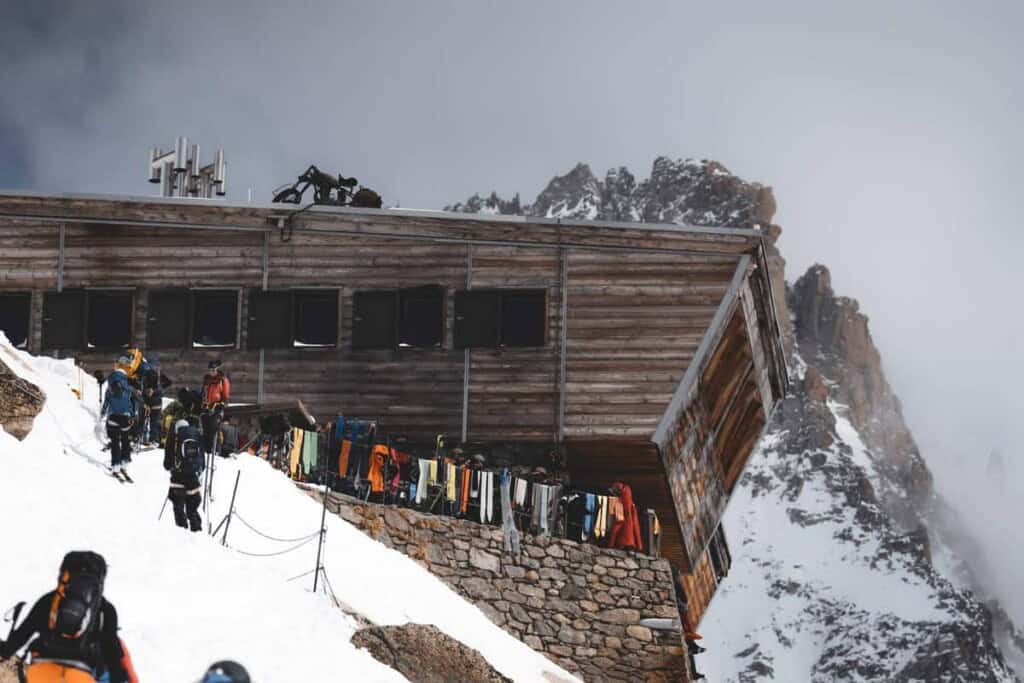
Overnight stays in huts
When you stay overnight in a hut, you need very few things in addition. The SAC huts are modern, friendly and the food is warm and delicious.
- Silk sleeping bag and toiletries
- Little spare linen
- Underwear and a fresh T-shirt are enough. The touring clothes are also comfortable to wear in the hut.
- Sufficient cash for consumption at the hut
- Possibly earplugs, you won't be sleeping alone in the hut.
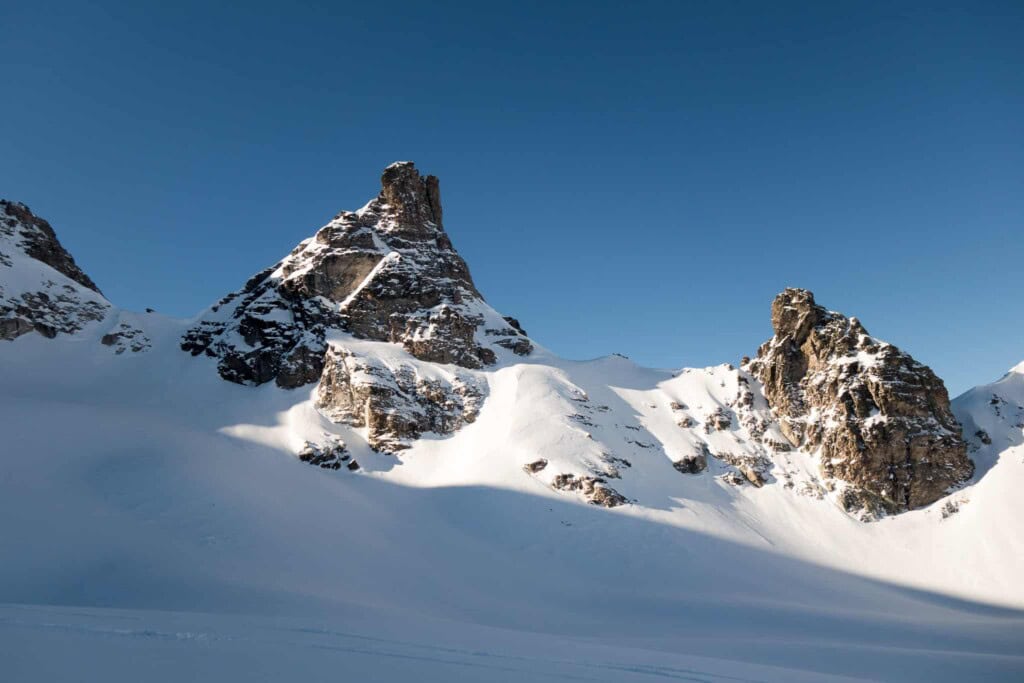
Independent tours
If you are going on a tour on your own, we recommend that you pack the following. Our mountain guides always have these utensils with them.
- a first aid kit with painkillers and bandages
- a repair kit for skis and bindings with
- Wire and string
- strong adhesive tape
- Cable tie
- Multitool
- Spare batteries for the avalanche beacon.
- a Rega radio or a satellite messenger. The device from Garmin, inReach miniis grandiose.
- a piece of rope for a short dicey spot
- A kit to make a makeshift rescue sled out of a pair of skis in an emergency.
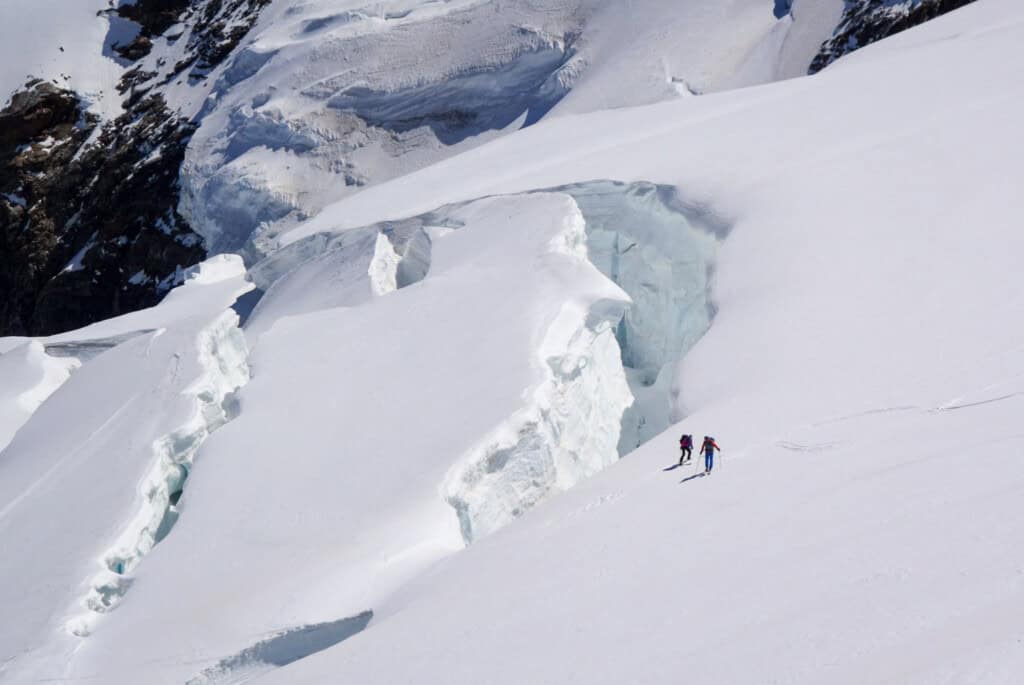
Glacier and high mountain tours
For tours on glaciers or in the high mountains, the following items also belong:
- Ice Axe
- not too long: an ice axe is not a walking stick.
- Crampons with Antistoll
- A crampon with a basket at the front and a clip at the back is recommended. These are also good to use on high-touring boots.
- Gstätli (climbing harness)
- A light climbing harness is sufficient for ski tours. You rarely hang in the harness.
- 2 screw carabiners for quick roping up on the glacier.
- 1 webbing sling, 120 cm as a self-securing sling or prusik on a fixed rope.
- Headlamp, as you start early in the morning and enjoy the sunrise.
Questions and answers about the packing list for ski tours and ski touring equipment ?¿
Can ski touring skins be waxed?
Yes, and they have to be from time to time. Either you use a normal wax block or one especially for skins, it doesn't matter, and coat the skins vigorously in both directions with the block. Alternatively, you can impregnate the skins with a spray. The wax or spray impregnates the skin. This makes the skins glide better and reduces the formation of studs on the skins.
Is a softshell jacket better than a hardshell jacket?
A softshell jacket is just a slightly better pullover. It is windproof, but not waterproof. We actually always use a waterproof hardshell jacket in the mountains and don't own a softshell jacket at all. But if you like the softshell jacket, it is of course also a good piece of clothing!
Is a ski tour possible with normal ski boots?
Yes, but not recommended for longer time or longer tours. Modern ski touring boots are very comfortable and offer a great range of movement. The ascent is much more pleasant with ski touring boots. For the descent, ski touring boots are sufficiently stiff. For a short familiarisation tour, normal ski boots are okay.
Is a special backpack necessary for ski tours?
A normal backpack is quite sufficient for ski tours. For high-altitude ski tours, you need to be able to tie the skis onto the backpack. Ski touring backpacks often have a separate compartment for shovel and probe and good devices for tying the skis on. There are also avalanche airbag backpacks. However, these are mainly recommended for freeriding.
How does a ski touring helmet differ from a ski helmet?
A ski touring helmet is somewhat lighter and more compact. Especially the area around the ears is typically flexible in a ski touring helmet. Climbing helmets that also meet the ski touring standard are also suitable for spring.
What does ski touring equipment cost?
For ski touring equipment you have to reckon with about the following prices:
- Ski set with binding and skins: 1000 - 1500.-
- Ski touring boot: around 700.-
- Safety Set with avalanche transceiver, shovel, probe: around 400.-
A good address for used equipment is the Second-Peak in Zurich.
What is the usual centre width for a touring ski?
A good all-round touring ski has a centre width of about 95mm.
What should I look out for when buying a touring ski?
Modern touring skis are rockered, i.e. they have a long shovel. Therefore, you should buy touring skis that are about your body size. Another important aspect is the width. An all-round ski has about 95mm width under the binding. Powder skis, or downhill-oriented skis for deep snow, are often somewhat wider. For Switzerland, however, it is not really worth going beyond a centre width of 110mm. Slightly narrower, approx. 88mm wide, somewhat lighter and more agile skis are suitable for spring. The weight you carry uphill also plays an important role. It is better to save a little weight on the binding and buy a slightly heavier ski. A good value for the weight is about 1.5kg per ski.
How heavy should touring skis be?
Good touring skis weigh about 1.3-1.6kg, depending on the length and width of the ski. It is better to use heavier skis with a very light binding.
Which skis are ideal for ski mountaineering?
For high-altitude ski touring, where the snow is either hard or nice and slushy, we recommend slightly narrower and somewhat shorter skis, about 88mm wide under the binding and a few cm shorter than your height. Nice and light, as high altitude ski tours are usually long.